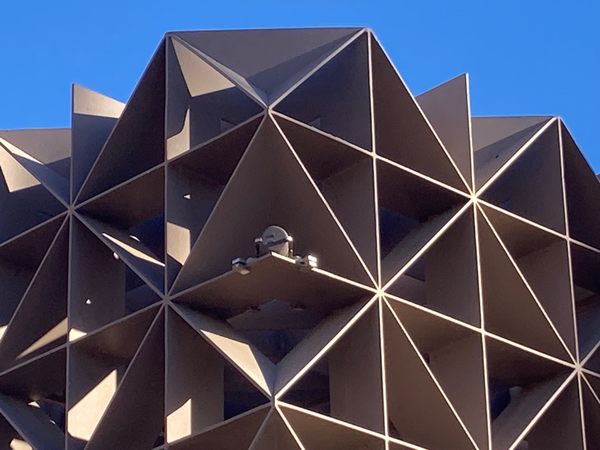While the ASU Art Museum primarily contains temporary exhibits, one of them is expected to remain there until the year 3015. That is because the Millennium Camera, installed in 2015, has the world’s longest exposure time of 1,000 years. (The current record for a completed exposure photo is a mere eight years and one month.) If successful, it will show a millennium of change at a single Tempe intersection in just one photograph. The ASU Art Museum has ambitiously committed to displaying the final photo in March 3015.
Creator Jonathon Keats is an experimental philosopher and conceptual artist whose art and thought experiments often push the boundaries of traditional media and thought. This was evident from his debut work, “Twenty Four Hour Cogito,” in which he sat and thought in a gallery for 24 hours straight. One could buy his thoughts by the minute for an amount indexed to one’s own per-minute income. Among his other projects are a choreographed ballet for honeybees, an attempt at genetically engineering God, and copyrighting his mind as a unique neural network he himself had created.
The Millennium Camera was inspired by San Francisco, where Keats lives. Noticing rapid change due to gentrification, he wanted to create a medium that makes people more aware of gradual change. This way, he hopes that we become more aware of what we want to see preserved around us. He chose a pinhole camera design that was as low-tech as possible to prevent it from breaking. It is made of copper, which develops an oxidized protective layer over time, and the front interior is also covered with 24-karat gold which does not corrode. Rose madder is used as a pigment because it fades very slowly in the sunlight. Although there is no guarantee that the camera will work the first time, Keats hopes that future generations will improve on his design if it fails.
Keats chose to install the Millennium Camera in Tempe because Arizona could be especially hard hit by climate change and a scarcity of water. He has also since created additional millennium cameras at Amherst College in Massachusetts, Lake Tahoe, and Tumamoc Hill in Tempe, and hopes to install more cameras in Los Angeles, China, and the Austrian Alps. Keats refers to all of them as a “global network observing our changing environment.”

